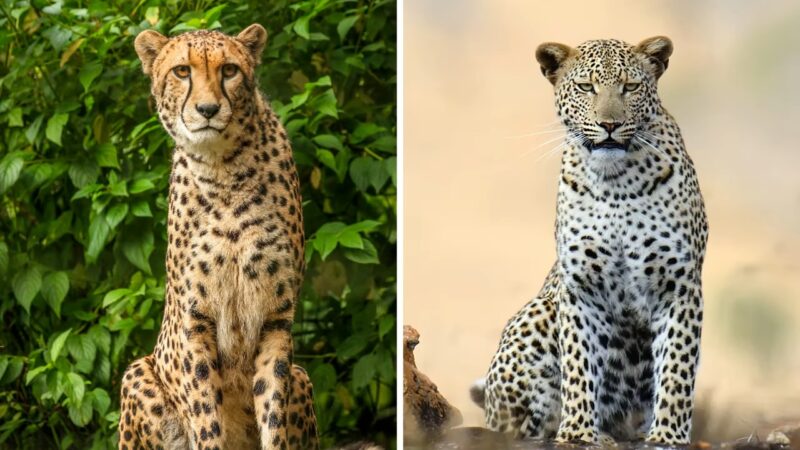In the vast savannas, jungles, and grasslands of the world, two magnificent big cats stand out: the cheetah and the leopard. While both are symbols of raw power and grace, they have distinct characteristics and serve different roles in the wild.
The cheetah is the fastest land animal on Earth, capable of reaching speeds of up to 75 mph. It uses its speed to chase down its prey, which typically consists of small to medium-sized ungulates such as gazelles and impalas. The cheetah’s long legs, slender body, and aerodynamic build all contribute to its speed.
The leopard is more adaptable than the cheetah and can live in a wider variety of habitats, including forests, deserts, and mountains. It is also a more versatile hunter and can take down prey of all sizes, from rodents to antelope. The leopard’s powerful jaws and sharp claws allow it to subdue its prey, and its ability to climb trees gives it a safe place to store its kill.
By understanding the unique physical traits of the cheetah and the leopard, we can better appreciate their significance in the ecosystem and their adaptation strategies. The cheetah’s speed allows it to catch prey that would otherwise be too fast for it, while the leopard’s versatility and adaptability allow it to survive in a variety of habitats. Both animals play an important role in the food chain, and their conservation is essential for the health of their ecosystems.
Physical Attributes
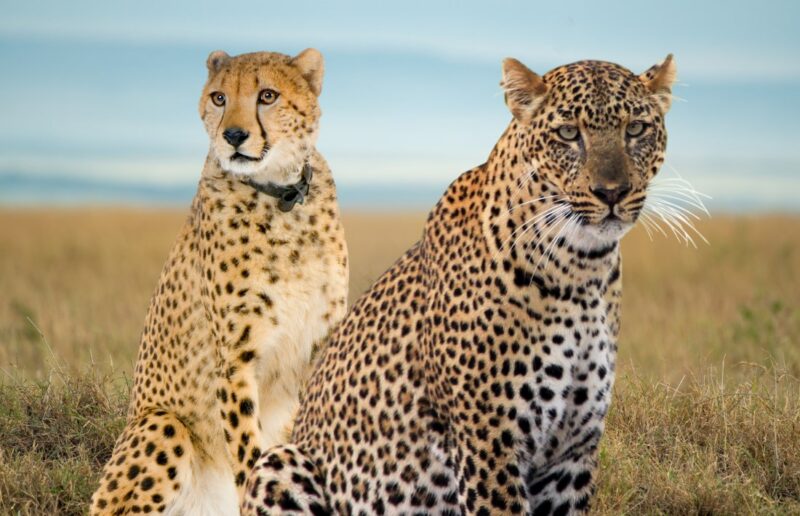
The cheetah’s aerodynamic design, from its deep chest to its narrow waist, optimizes its respiratory and cardiovascular systems, providing the necessary oxygen during high-speed chases. Its large nasal passages accommodate increased airflow, while its adrenal glands are larger, enabling rapid responses during the chase. This structural design, coupled with lightweight bones, results in an animal crafted for swift pursuits over short distances.
Leopards, on the other hand, combine strength and agility in their physique. Their robust shoulders power their leaping and climbing abilities, and their flexible spines enhance their pouncing capability. With a broader skull housing powerful jaw muscles, leopards can exert a strong bite, crucial for their ambush style of hunting. This solid build makes them one of the most versatile predators, capable of adapting to a wide range of habitats from forests to urban areas.
Coat Patterns
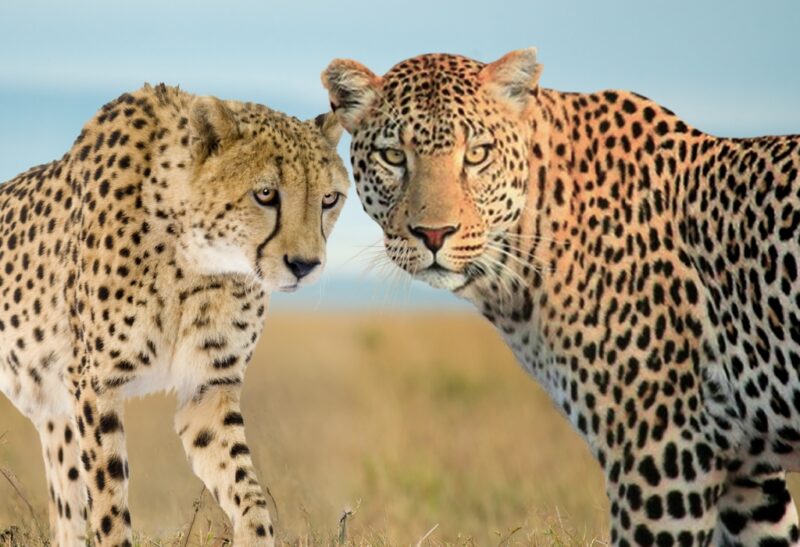
The coat of a cheetah not only consists of uniformly round spots but also unique “tear marks” that run from the inner corners of their eyes down to the sides of their mouth. These marks help to reflect the sun’s glare and focus better on their prey. The light-colored underbelly contrasts with the spotted topside, possibly aiding in regulating their body temperature by reflecting sunlight.
Leopards’ rosette patterns are not just aesthetic marvels; they serve as vital survival tools. The placement and type of rosettes can indicate a leopard’s geographic origin. For instance, those in dense forests tend to have larger and fewer rosettes, while those in open terrains have smaller and more densely packed patterns. Furthermore, leopards also have a white underbelly, which, much like the cheetah, might assist in temperature regulation and stealth during hunting. The variability in their coat pattern has even given rise to unique forms like the black panther, which is a melanistic variant of the leopard, seen predominantly in dense forests.
Claw Features
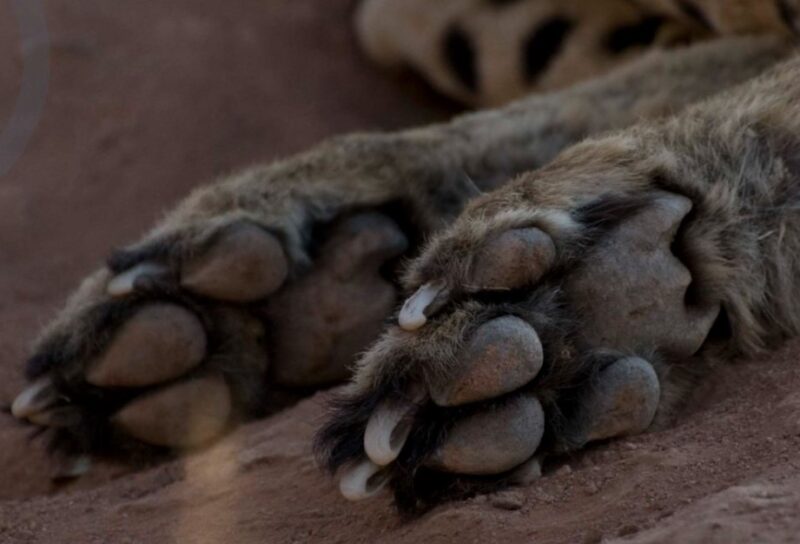
For cheetahs, the permanence of their semi-retractable claws isn’t the only adaptation for speed. These claws, combined with tough pads on their feet, function similarly to tire treads, granting the cheetah more grip on the ground. While their claws might lack the sharpness seen in other big cats due to continuous exposure, this is a trade-off for their unparalleled acceleration and maneuverability during a chase.
The leopard’s retractable claws are akin to nature’s multi-tool. They emerge razor-sharp when needed for hunting, allowing the leopard to grip its prey securely. When climbing, these claws dig into the bark, granting the leopard a vantage point in the trees or an elevated spot to stash their kill away from scavengers. When not in use, the claws retract, protecting them from wear and ensuring they remain sharp and ready.
Behavioral Traits
Cheetahs, with their daytime activity, have evolved certain behaviors to mitigate risks. While their sprinting prowess is unmatched, their endurance is limited. Post-hunt, they often need recovery time, leaving them vulnerable. It’s not uncommon for other predators or scavengers to snatch away their hard-earned meal during this recovery period. This is one reason why cheetahs frequently scan their surroundings, always on the alert for potential threats. When it comes to territory, while males might form coalitions with brothers from the same litter, females are typically more nomadic, traversing vast areas in search of prey.
Leopards, in contrast, are masters of adaptability. From dense forests to urban peripheries, these cats have showcased an impressive ability to coexist in various habitats. Their nocturnal habits serve multiple purposes. The cloak of night not only aids in hunting but also helps in evading larger predators or human encounters. A leopard’s ability to swim, combined with its penchant for climbing, allows it to utilize a wide array of environments. Their vocalizations, from raspy coughs to growls, play roles in communication, especially in dense habitats where visibility might be limited.
Dietary Habits
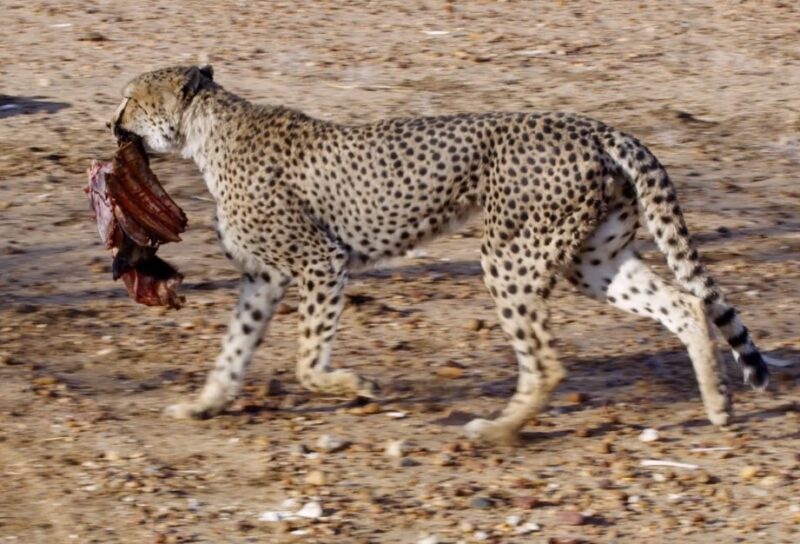
Cheetahs rely heavily on their acute vision to spot potential prey from a distance. Once they’ve locked onto a target, they approach with stealth until they’re close enough to initiate their legendary sprints. While they have a high success rate, the energy expended in these chases means they need to rest before eating, which sometimes results in their prey being taken away by opportunistic scavengers or larger predators. Their dietary preference is largely due to their physical build; targeting smaller ungulates ensures a quicker takedown, reducing the risks of injury.
Leopards, on the other hand, are generalists in their dietary habits. Their versatility can be seen in their choice of prey, ranging from small creatures like birds, rodents, and hares to medium-sized ungulates and even larger prey when the opportunity presents itself. The leopard’s adaptability is showcased in its hunting techniques. Depending on the habitat and prey, it might employ stalking, ambushing, or even opportunistic hunting. In areas where they coexist with humans, leopards have been known to prey on domestic livestock, leading to human-wildlife conflicts.
Nature’s Wonders
Cheetahs, with their slender grace and breathtaking speed, are often regarded as the epitome of evolutionary specialization. Their unique adaptations, from large nostrils for increased oxygen intake during sprints to the distinctive “tear marks” that minimize glare and focus better on prey, make them unparalleled in their niche.
Leopards, with their rosette-clad coats and mysterious demeanor, are the shadows of the wild. Their adaptability is legendary, allowing them to thrive in a variety of environments across Africa and parts of Asia. Their incredible strength, manifested in their ability to haul prey larger than themselves up trees, is a testament to their survival prowess.
Yet, despite their wonders, these big cats face an uncertain future. The shrinking of natural habitats, increased human encroachments, poaching, and retaliatory killings are just some of the threats they grapple with. Safeguarding them is not a task relegated to conservationists alone. It requires a global effort, one that recognizes the importance of these cats in the tapestry of life, the health of ecosystems, and the intrinsic value they bring to our world.
FAQ
How do cheetahs and leopards take care of their young?
Both cheetahs and leopards are good mothers. They will protect their young and teach them how to hunt and survive. However, cheetah cubs are more vulnerable than leopard cubs because they are slower and cannot climb trees as well.
What are the main threats to cheetahs and leopards?
The main threats to cheetahs and leopards are habitat loss, hunting, and conflict with humans. Their habitat is being destroyed by human development, and they are also hunted for their fur and their body parts. Cheetahs are also threatened by conflict with farmers, as they may prey on livestock.
Reflections on Nature’s Marvels
Cheetahs and leopards, two of the African continent’s most iconic creatures, are emblematic of the wild’s majesty and the delicate balance of nature. Both play crucial roles in regulating prey populations and contributing to the health and dynamism of their ecosystems.
Yet, they find themselves navigating a labyrinth of challenges, from habitat loss to human conflicts. Their plight underscores a broader narrative of our planet’s dwindling biodiversity.
To preserve these incredible animals is not just an act of compassion; it’s a testament to our commitment to safeguarding nature’s intricate web. The protection of these majestic creatures resonates with a more profound call – that of ensuring a harmonious coexistence of all life on Earth.


